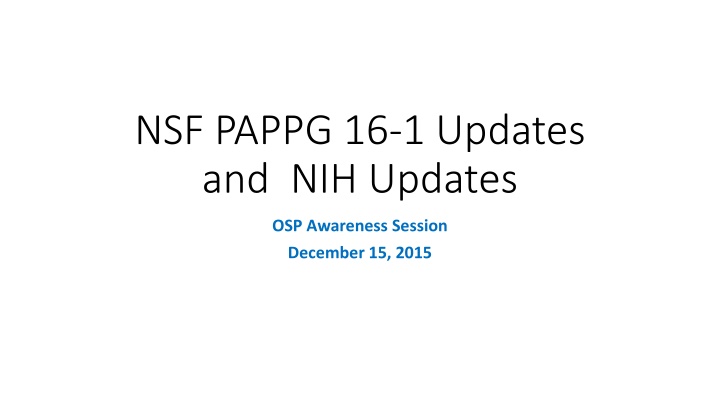
Updates and Important Changes for NSF Proposals and Awards
Stay informed about the NSF PAPPG 16-1 updates and NIH updates that are effective for proposals and awards after January 25, 2016. Learn about submission deadlines, new certifications, collaborator information requirements, biographical sketch guidelines, and changes in current and pending support documentation.
Download Presentation

Please find below an Image/Link to download the presentation.
The content on the website is provided AS IS for your information and personal use only. It may not be sold, licensed, or shared on other websites without obtaining consent from the author. If you encounter any issues during the download, it is possible that the publisher has removed the file from their server.
You are allowed to download the files provided on this website for personal or commercial use, subject to the condition that they are used lawfully. All files are the property of their respective owners.
The content on the website is provided AS IS for your information and personal use only. It may not be sold, licensed, or shared on other websites without obtaining consent from the author.
E N D
Presentation Transcript
NSF PAPPG 16-1 Updates and NIH Updates OSP Awareness Session December 15, 2015
NSF PAPPG (16 NSF PAPPG (16- -1) 1) Effective for proposals submitted or due on or after January 25, 2016. Effective for new awards or new increments of funds received on or after January 25, 2016. Link to the NSF PAPPG 16-1
When to Submit Proposals When to Submit Proposals Failure to submit by 5 p.m. submitter s local time will result in the proposal not being accepted. That means 5:00:01 would be considered late and not accepted.
Proposal Certifications Proposal Certifications Has been supplemented with a new certification regarding Dual Use Research of Concern. This deals with select agents and toxins The certification adds the layer of assurance that SU has controls and a policy in place. SU s Policy on Dual Use Research of Concern is located here.
Collaborators & Other Affiliations Information Collaborators & Other Affiliations Information A new single-copy document that requires each senior project personnel to provide information regarding collaborators and other affiliations. This information used to be provided as part of the Biographical Sketch. The new format no longer requires proposers to identify the total number of collaborators and other affiliations when providing this information.
Biographical Sketch Biographical Sketch 3rd-party solutions to develop biographical sketch is allowable, however, the information must be compliant with NSF proposal format requirements. Biographical sketches of all senior personnel can no longer be grouped together in a single PDF file. Biographical sketches must now be uploaded separately for each individual identified on the proposal as senior personnel. Biographical sketches for Other Personnel and for Equipment proposals, should be uploaded as a single PDF file in the Other Supplementary Documents section of the proposal. Biosketch length remains 2 pages long
Current and Pending Support Current and Pending Support Current and Pending Support information can no longer be submitted as a single PDF document associated to the PI, but rather shall be uploaded individually for each key personnel Internal institutional resources has been added as example of Current and Pending Support (previously was only external funding).
Font Sizes and other formatting Font Sizes and other formatting Language has been removed that previously permitted program solicitations to specify different type size, margin and spacing requirements
Results from Prior NSF Support Results from Prior NSF Support Identify NSF funding with a start date in the past five years; and Provide examples of the types of NSF awards included as prior support (e.g. standard, continuing, Major Research, etc..) In cases where PIs/ Co-PIs received multiple awards, include only one award most closely related to the proposal.
NSF Public Access Plan: Highlights NSF Public Access Plan: Highlights Journal articles and juried conference papers must be deposited in the NSF Public Access Repository (NSF-PAR), within 12 months following the initial publication Effective for journal articles and juried conference papers generated from proposals submitted on or after January 25, 2016 First set of proposals awarded June -July 2016 Likely to see first publications requiring deposit in Fall 2016 PIs will have option to voluntarily deposit publications, prior to the effective date
Due Date for submission of final project report Due Date for submission of final project report and Project Outcomes Report and Project Outcomes Report Due dates have been changed from 90 days to 120 days to be consistent with financial reporting requirements.
Research.gov Updates Research.gov Updates Ten additional Notifications and Requests were migrated to Research.gov in August 2015. They include: Long-Term Disengagement of the PI or Co-PI Pre-Award Costs in Excess of 90 Days Significant Changes in Methods/Procedures Significant Changes/Delays or Events of Unusual Interest Changes in Objectives or Scope Reallocation of Funds Provided for Participant Support Costs Change in Person-Months Devoted to the Project Withdrawal of PI or Co-PI Rearrangements/Alterations in Excess of $25,000 (Construction) Conflicts of Interest No Cost Extensions were migrated in October 2015
Automated Compliance Checking Automated Compliance Checking NSF continues to expand automated proposal checks to reduce workload (on institutions and NSF staff) Newest set of compliance checks surround proposals submitted in response to program solicitations. Warning messages are triggered if any of the following sections are not included: References Cited Biographical Sketch(es) Budget Justification: Primary Organization Budget Justification: Sub-recipient Organization Current and Pending Support Facilities, Equipment and Other Resources
Pilot Programs to Reduce Administrative Pilot Programs to Reduce Administrative Burden Burden Just-in-Time budget process for selected core programs in MPS/DMS, MPS/PHY, and ENG/IIP Require only a textual description of the resources necessary to complete the project. Require detailed budget only if the proposal is recommended for an award. Allows reviewers and NSF staff to focus on the science. Improving the IACUC process award to PRIM&R Award is to develop a Train-the-Trainer IACUC Institute Goal is to improve oversight of animal care and use programs nationwide by ensuring IACUC accurately apply current regulatory standards Funding also provided by NIH, FDA, and USDA
NIH Update NIH Update
NIH Application Guidance changes NIH Application Guidance changes Effective for applications due on or after January 25, 2016, but prior to May 25, 2016. Updates to application instructions for research strategy section, focus is on reproducibility of research findings through increased rigor and transparency NOT-OD-16-011 Simplification of the Vertebrate Animals section in proposal applications NOT-OD-16-006 NIH inclusion policy, age is redefined to be individuals under 18 years old instead of under 21 years old, NOT-OD-16-010.
Updated NIH Forms Updated NIH Forms Effective for applications due on or after May 25, 2016, FORMS-D application forms must be used. OSP will provide application templates for download on our website with pre-populated SU information, likely in March timeframe when NIH makes the forms available. By March 25, 2016, NIH will provide new application guides to be used with FORMS-D applications.
New Biographical Sketch New Biographical Sketch NIH and AHRQ will require applicants to use the newly published biosketch format for all grant and cooperative agreement applications submitted for due dates on or after May 25, 2015. The revised forms and instructions are now available and adjustments have been made to improve their usability. The following are some of the features of the new format; Extends the page limit for the biosketch from four to five pages Investigators can outline the central findings of prior work and the influence of those findings on the investigator s field work Emphasizes accomplishments, not just a listing of publications For more information: NOT-OD-15-032
NIH Implementation of Dual Use Research of NIH Implementation of Dual Use Research of Concern (DURC) Concern (DURC) Policy for Institutional Oversight of Life Sciences Dual Use Research of Concern (the Policy) issued on September 24, 2014. Applies to all New and Renewal awards issued on applications submitted on or after January 25, 2015, and to all non-competing continuation awards issued on or after January 25, 2015. Institutions have one year (until September 24, 2015) to establish the necessary infrastructure to come into full compliance with the Policy. NOT-OD-15-017
Additional Thoughts, contd Additional Thoughts, cont d Before you submit, we suggest that you: Contact your Program Manager EARLY Pitch your idea and see if they might be interested, or perhaps if there may be other programs interested. Be sure to cite others work carefully! Remember that individual Program Announcements take precedence over GPG language, so read carefully. While the compliance checking is nice, trust your eyes and your ruler!
OSP Resources OSP Resources Amy Deppa (e-applications) asdeppa@syr.edu Amy Graves (CAS) ajgraves@syr.edu Meghan MacBlane (iSchool, BBI, IVMF) mtmacbla@syr.edu Caroline McMullin (Maxwell, SoE) cmcmulli@syr.edu Mary Ellen Gilbert (LCSmith, CoE, CASE) magilber@syr.edu Stuart Taub (general questions & Research.gov help) staub@syr.edu

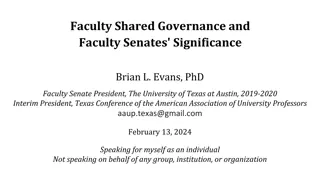
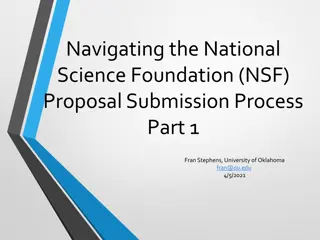
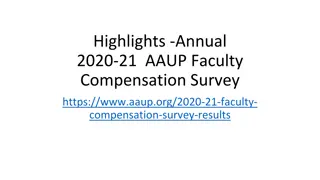
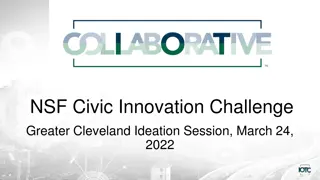
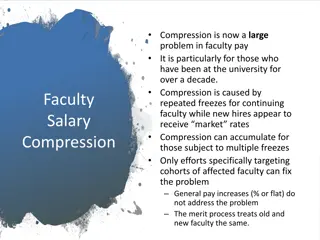
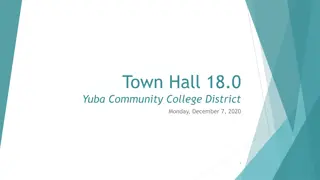
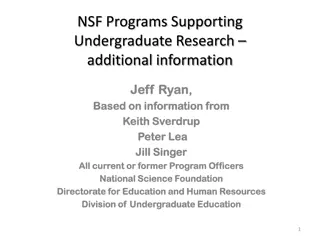
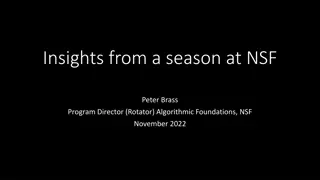
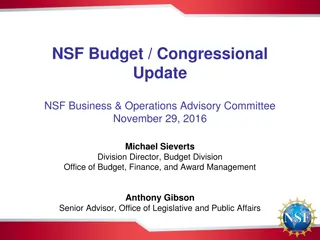
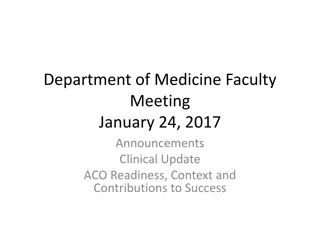
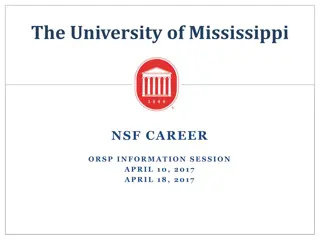

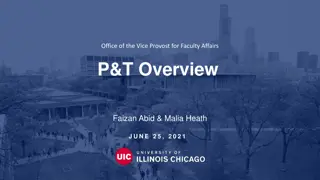
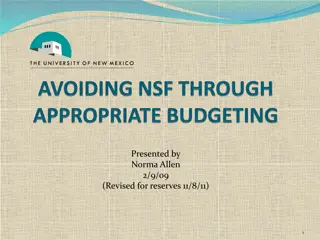

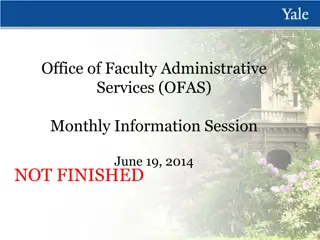
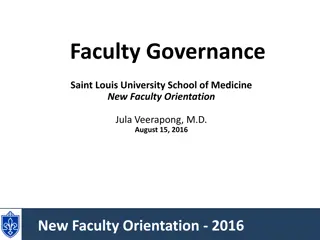
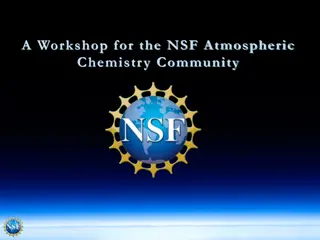

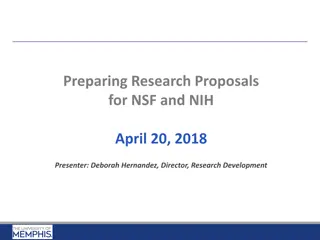
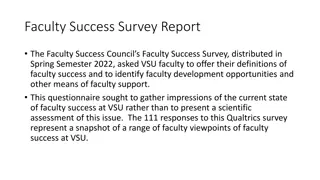
![Overview of the Faculty Senate at [Institution Name]](/thumb/233771/overview-of-the-faculty-senate-at-institution-name.jpg)